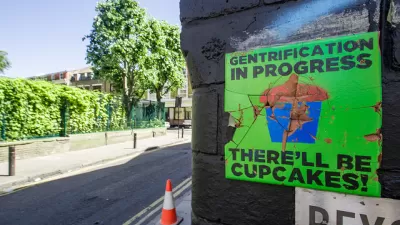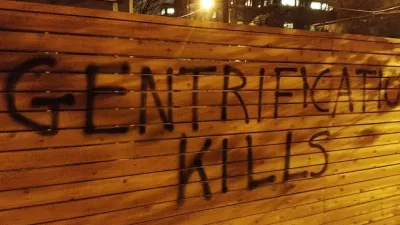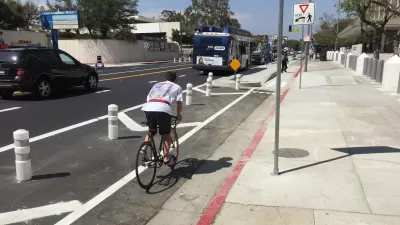My pitches for space usually centered around the developer’s needs and not the needs of the neighborhood or its residents. I didn’t pay much attention to what impact those events would have on the surrounding neighborhoods.
My first foray into creative placemaking entailed teaming up with a friend who managed a local art gallery to organize an art party in one of those empty retail spaces. The commercial real estate agent who represented the owner of that space was my neighbor, and mentioned that he was looking for ways to activate the space to attract potential renters. My friend and I programmed performance artists, video artists, and a band.
A few months later, we organized a similar event in a space down the street that had been a brake service garage. Oil stained the concrete floor and tools still hung on the wall. This time we charged $10 a head and didn’t give away the booze. The brake shop has since been turned into a coffee shop and design studio.
Once I saw that I could make a living producing art events, despite the significant decrease in salary, I quit my law job and started organizing arts events in raw spaces all over the city. I cultivated relationships with developers who would let me temporarily occupy their buildings, which were usually located in less developed parts of the city.
My pitches for space usually centered around the developer’s needs and not the needs of the neighborhood or its residents. I didn’t pay much attention to what impact those events would have on the surrounding neighborhoods. I believed that the neighborhoods would be improved if I could convince people to come visit neglected sections of the city and see their potential.
FULL STORY: Regrets of an Accidental Placemaker

Planetizen Federal Action Tracker
A weekly monitor of how Trump’s orders and actions are impacting planners and planning in America.

Chicago’s Ghost Rails
Just beneath the surface of the modern city lie the remnants of its expansive early 20th-century streetcar system.

San Antonio and Austin are Fusing Into one Massive Megaregion
The region spanning the two central Texas cities is growing fast, posing challenges for local infrastructure and water supplies.

Since Zion's Shuttles Went Electric “The Smog is Gone”
Visitors to Zion National Park can enjoy the canyon via the nation’s first fully electric park shuttle system.

Trump Distributing DOT Safety Funds at 1/10 Rate of Biden
Funds for Safe Streets and other transportation safety and equity programs are being held up by administrative reviews and conflicts with the Trump administration’s priorities.

German Cities Subsidize Taxis for Women Amid Wave of Violence
Free or low-cost taxi rides can help women navigate cities more safely, but critics say the programs don't address the root causes of violence against women.
Urban Design for Planners 1: Software Tools
This six-course series explores essential urban design concepts using open source software and equips planners with the tools they need to participate fully in the urban design process.
Planning for Universal Design
Learn the tools for implementing Universal Design in planning regulations.
planning NEXT
Appalachian Highlands Housing Partners
Mpact (founded as Rail~Volution)
City of Camden Redevelopment Agency
City of Astoria
City of Portland
City of Laramie





























